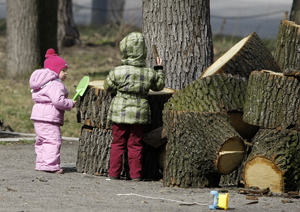Demographic dividends: untapped opportunity
Ukrainian population will decrease every year. How to break these tendencies?
According to experts, in the beginning of 2012 there were 45,636,000 people living in Ukraine (over the past year the number reduced by 145,000). According to Ukraine’s Ministry of Health, the population of our country is on the fifth place among European countries and on the second – in the CIS after Russia. Over the past 20 years the number of deaths has been always greater than the number of births. As noted in the Ministry of Health, the cause of the demographic crisis is the prolonged social and economic crisis, which has badly affected and continues to affect the quality of life and health as well as the birth rate. The experts say that the urban population of Ukraine is more than 31 million people, rural – over 14 million. Since migration from villages to cities does not stop, the general decline of population there is smaller. Instead, the decrease in rural population and often the extinction of entire towns is caused, in fact, by this migration to the cities and by population aging, especially among women (20 percent are older than 60). The “oldest” regions are Vinnytsia, Zhytomyr, and Chernihiv oblasts. The rates of natural population decline in these regions as well as in Sumy, Poltava, Cherkasy, Luhansk, Donetsk, and Kirovohrad oblasts were significantly higher than average and fluctuated between 8.3 percent and 19.2 percent.
Pavlo SHEVCHUK, leading researcher at the Ptukha Institute of Demography and Social Studies, Ukraine’s National Academy of Science:
“At the present moment the most active childbearing group is women who were born mostly in the middle of the 1980s (generally the most child-bearing are those aged 25 to 35). That was the time when birth rate in the country also increased (the time for child-care leave was increased and that was one of the reasons, too) and now we are using the accumulated potential or, we can say, demographic dividends: in the 1980s we invested in population and now it pays back. In some oblasts of Ukraine like Volyn, Zakarpattia, Rivne, and Chernivtsi oblasts as well as in Kyiv there is a natural population growth, when the birth rate is higher than mortality. However, these figures do not balance the total decrease in population: according to preliminary data the number of deaths in Ukraine exceeds the number of births by nearly 162,000. In a few years the situation will change even more: roughly, starting from 2017 we will feel the consequences of birthrate decline in the 1990s. At that time the number of children who were born was the smallest and here, these people themselves will create families and will give birth to others. Thus, we again expect birthrate decline. One could be optimistic in the past 15 years, when Ukraine was receiving demographic dividend, which it didn’t use. At the same time Chinese took advantage of their situation: although now they restrict the birth rate and it is below the level of reproduction, their population is growing due to the fact that before there also was a greater birthrate in China. In our country this resource was ‘largely squandered’ and there will be no more of it. Therefore, there will be less and less of Ukrainians with every year. It even won’t be possible to stop the decline of population number by increasing the life expectancy. I calculated that even if we now would achieve the mortality rates of Sweden (the average life expectancy for men in 2010 was 79.5 years, for women – 83.5 years) we would only have five percent increase in labor potential. But in a few years it would still go down.”






